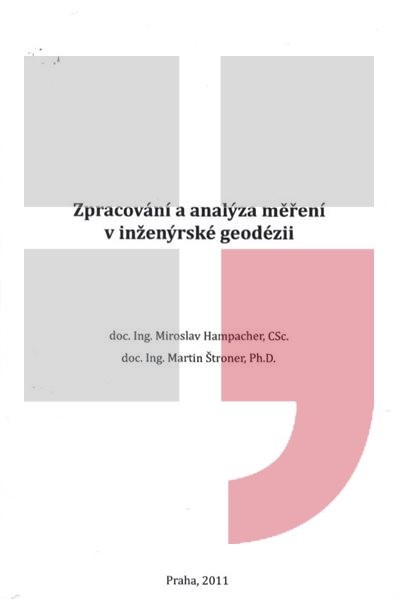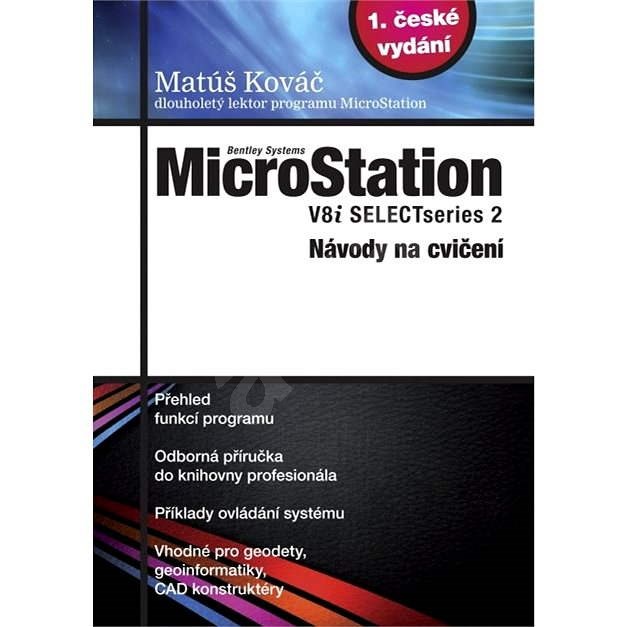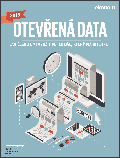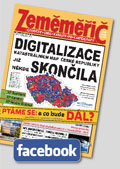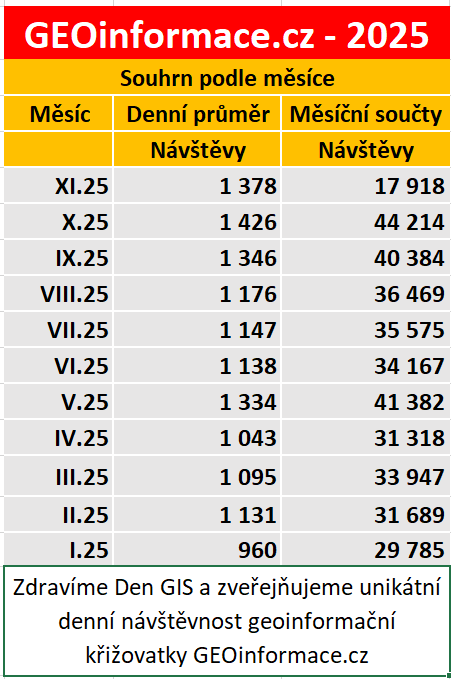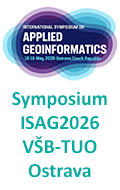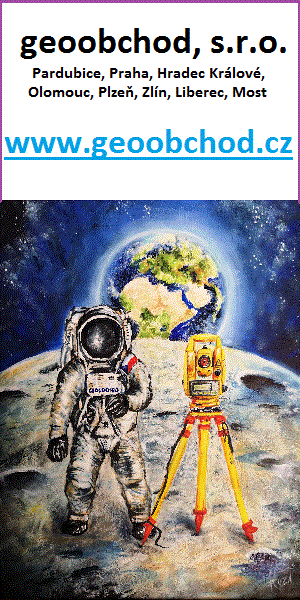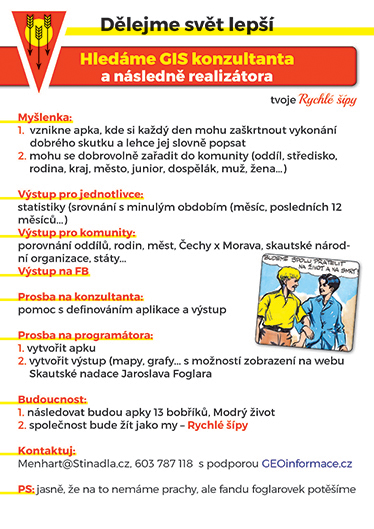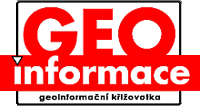ESA Observing the Earth 
zdroje zpráv:
Earth from Space: Manicouagan crater
19.12.2025 10:00 Image:
This week Earth from Space features a wintery image: a red and white sphere that, if seen from a distance, resembles a festive decoration.
Image:
This week Earth from Space features a wintery image: a red and white sphere that, if seen from a distance, resembles a festive decoration.
First image from Sentinel-6B extends sea-level legacy
16.12.2025 15:00
Copernicus Sentinel-6B, launched last month, has reached its orbit and delivered its first set of data, which show variations in sea level in the North Atlantic Ocean. This data underlines how the mission will continue to strengthen the long-term reference record of sea levels, a key parameter of climate change.
First image from Sentinel-6B extends sea-level legacy
16.12.2025 15:00
Copernicus Sentinel-6B, launched last month, has reached its orbit and delivered its first set of data, which show variations in sea level in the North Atlantic Ocean. This data underlines how the mission will continue to strengthen the long-term reference record of sea levels, a key parameter of climate change.
Satellites help tackle landfill methane leaks
15.12.2025 10:00
Satellites are emerging as a powerful new tool in the fight to curb emissions of methane. While methane is much shorter-lived in the atmosphere than carbon dioxide, it is vastly more potent at trapping heat, which makes rapid cuts essential for slowing warming in the short term. The same satellite technology that has transformed methane monitoring in the oil and gas sector is now being turned towards another major source – landfill sites.
Earth from Space: Pariacaca Mountain Range, Peru
12.12.2025 10:00 Image:
Following International Mountain Day, which creates awareness of the importance of mountain environments around the world, the Copernicus Sentinel-2 mission takes us over the Pariacaca Mountain Range in Peru.
Image:
Following International Mountain Day, which creates awareness of the importance of mountain environments around the world, the Copernicus Sentinel-2 mission takes us over the Pariacaca Mountain Range in Peru.
Swarm detects rare proton spike during solar storm
11.12.2025 10:00
The European Space Agency’s Swarm mission detected a large but temporary spike of high-energy protons at Earth’s poles during a geomagnetic storm in November. It did this not with the scientific instruments for measuring Earth’s magnetic field, but with its ‘star tracker’ positioning instruments – a first for the Swarm mission.
Swarm detects rare proton spike during solar storm
11.12.2025 10:00
The European Space Agency’s Swarm mission detected a large but temporary spike of high-energy protons at Earth’s poles during a geomagnetic storm in November. It did this not with the scientific instruments for measuring Earth’s magnetic field, but with its ‘star tracker’ positioning instruments – a first for the Swarm mission.
From the Minoans to satellite metrology
8.12.2025 15:00 Video:
00:06:15
Video:
00:06:15
The Minoans were a sophisticated Bronze Age civilization (c. 3100–1100 BC) on Crete and widely regarded as Europe’s earliest advanced culture. They are best known for their impressive palace complexes, most notably Knossos, and for their far-reaching maritime trade, which most likely relied on celestial navigation and a detailed understanding of the constellations. The Minoans recognised a hidden order in the natural world: a force to be respected, yet also harnessed for human benefit. Their era, the Age of Bronze, marked a pivotal moment in the development of human society.
Today, our own relationship with nature must find a new equilibrium. The need to monitor environmental change has never been more urgent, and satellites provide the most powerful means of doing so. This video draws a line from the world of the Minoans to the satellites orbiting above us today, highlighting the vital role of metrology – the science of measurement – in ensuring that the data they provide are accurate and trustworthy. And it turns out that Crete is an ideal location for unique reference network that helps carry out this important task – and particularly important for the Copernicus Sentinel-6 mission.
The Sentinel-6 satellites carry the latest radar altimetry technology to further extend the sea-surface height record that began in the early 1990s. These measurements help scientists understand sea-level rise – crucial information for shaping climate policy and protecting the millions of people living in coastal areas around the world.
The first Sentinel-6 satellite was launched in November 2020, followed by Sentinel-6B in November 2025.
ROSE-L given the shakes
8.12.2025 10:13
A structural model of the upcoming Copernicus Radar Observing System for Europe at L-band satellite, or ROSE-L for short, has recently been put through a series of demanding tests – including intense vibration – to demonstrate that the satellite will be able to withstand the stresses of launch and operations in orbit.
Once in orbit, ROSE-L’s data will support a wide range of applications, from soil moisture and crop monitoring to forest mapping, maritime surveillance, and the detection of natural and human-induced hazards.
Earth from Space: Singing dunes and mysterious lakes
5.12.2025 10:00 Image:
This Copernicus Sentinel-1 image features part of the Badain Jaran Desert in northwestern China.
Image:
This Copernicus Sentinel-1 image features part of the Badain Jaran Desert in northwestern China.
EarthCARE lifts the clouds on climate models
3.12.2025 11:17
True to its promise, the European Space Agency’s EarthCARE satellite is now being used to calculate directly how clouds and aerosols influence Earth’s energy balance – the all-important balance that regulates our climate. In doing so, EarthCARE is poised to sharpen the accuracy of climate models, the very tools that guide global climate policy and action.
Flooding in Sri Lanka
1.12.2025 16:50 Image:
Puttalam district in North Western Sri Lanka is currently facing severe flooding, landslides and rockfalls, caused by heavy monsoon rains across the region. Copernicus Sentinel-2 captured an image over the region yesterday, 30 November 2025, as well an image one month ago, showing the extent of flooding.
Image:
Puttalam district in North Western Sri Lanka is currently facing severe flooding, landslides and rockfalls, caused by heavy monsoon rains across the region. Copernicus Sentinel-2 captured an image over the region yesterday, 30 November 2025, as well an image one month ago, showing the extent of flooding.
Italian mission adds to growing IRIDE space fleet
29.11.2025 9:00
The Italian programme IRIDE, which provides public sector services based on data from its fleet of Earth observation constellations, has added eight satellites to its second constellation, Eaglet II.
High-resolution radar satellites launched for Greece
29.11.2025 8:00
Thanks to the EU-funded Recovery and Resilience Facility, and through collaboration between the Greek government, the private satellite company ICEYE and the European Space Agency (ESA), two new high-resolution radar satellites have been launched to strengthen disaster management, environmental monitoring and national security across Greece.
High-resolution radar satellites launched for Greece
29.11.2025 8:00
Thanks to the EU-funded Recovery and Resilience Facility, and through collaboration between the Greek government, the private satellite company ICEYE and the European Space Agency (ESA), two new high-resolution radar satellites have been launched to strengthen disaster management, environmental monitoring and national security across Greece.
High-resolution radar satellites launched for Greece
29.11.2025 8:00
Thanks to the EU-funded Recovery and Resilience Facility, and through collaboration between the Greek government, the private satellite company ICEYE and the European Space Agency (ESA), two new high-resolution radar satellites have been launched to strengthen disaster management, environmental monitoring and national security across Greece.
ESA’s HydroGNSS mission launched to ‘scout’ for water
28.11.2025 22:50
The European Space Agency’s first Scout mission, HydroGNSS, was launched today, 28 November, marking a significant step in advancing global understanding of water availability and the effects of climate change on Earth’s water cycle.
The two twin HydroGNSS satellites were carried into orbit at 19:44 CET aboard a SpaceX Falcon 9 rocket, as part of the Transporter-15 rideshare flight from the Vandenberg Space Force Base in California.
ESA’s HydroGNSS mission launched to ‘scout’ for water
28.11.2025 22:50
The European Space Agency’s first Scout mission, HydroGNSS, was launched today, 28 November, marking a significant step in advancing global understanding of water availability and the effects of climate change on Earth’s water cycle.
The two twin HydroGNSS satellites were carried into orbit at 19:44 CET aboard a SpaceX Falcon 9 rocket, as part of the Transporter-15 rideshare flight from the Vandenberg Space Force Base in California.
Replay: HydroGNSS launch coverage
28.11.2025 22:00 Video:
01:45:00
Video:
01:45:00
ESA’s first Scout mission, HydroGNSS, was launched on 28 November 2025, marking a significant step in advancing global understanding of water availability and the effects of climate change on Earth’s water cycle.
The two twin HydroGNSS satellites were carried into orbit aboard a SpaceX Falcon 9 rocket from the Vandenberg Space Force Base in California, US.
Embracing the New Space concept, HydroGNSS is one of ESA’s new Scout missions being developed within the Earth Observation FutureEO programme.
HydroGNSS launch highlights
28.11.2025 22:00 Video:
00:02:51
Video:
00:02:51
ESA’s first Scout mission, HydroGNSS, was launched on 28 November 2025, marking a significant step in advancing global understanding of water availability and the effects of climate change on Earth’s water cycle.
The two twin HydroGNSS satellites were carried into orbit aboard a SpaceX Falcon 9 rocket from the Vandenberg Space Force Base in California, US.
Embracing the New Space concept, HydroGNSS is one of ESA’s new Scout missions being developed within the Earth Observation FutureEO programme.
ESA’s HydroGNSS mission lifts off
28.11.2025 19:50 Video:
00:02:27
Video:
00:02:27
ESA’s first Scout mission, HydroGNSS, was launched on 28 November 2025, marking a significant step in advancing global understanding of water availability and the effects of climate change on Earth’s water cycle.
The two twin HydroGNSS satellites were carried into orbit aboard a SpaceX Falcon 9 rocket from the Vandenberg Space Force Base in California, US.
Embracing the New Space concept, HydroGNSS is one of ESA’s new Scout missions being developed within the Earth Observation FutureEO programme.
Earth from Space: Eye of the Sahara
28.11.2025 10:00 Image:
The Copernicus Sentinel-2 mission captures a spectacular geological wonder in the Sahara Desert of Mauritania: the Richat Structure.
Image:
The Copernicus Sentinel-2 mission captures a spectacular geological wonder in the Sahara Desert of Mauritania: the Richat Structure.
ESA and Norway explore possibility of Arctic Space Centre
27.11.2025 8:35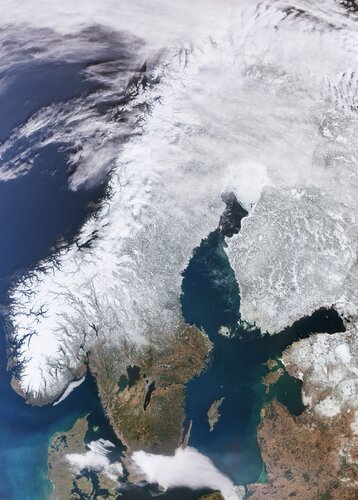
The European Space Agency has signed a letter of intent with Norway to advance the prospect of a new ESA Arctic Space Centre to be hosted in Tromsø.
ESA and Norway explore possibility of Arctic Space Centre
27.11.2025 8:35
The European Space Agency has signed a letter of intent with Norway to advance the prospect of a new ESA Arctic Space Centre to be hosted in Tromsø.
Watch: HydroGNSS, IRIDE and Greek mission satellites launch
26.11.2025 17:50
Update 26 November: The launch is now targeted for 28 November.
The European Space Agency’s HydroGNSS, a twin-satellite mission to gather data on Earth’s water cycle, is now scheduled to launch on 28 November at 19:18 CET (10:18 Pacific Time). Live coverage of the launch will be shown on ESA Web TV.
Watch: HydroGNSS, IRIDE and Greek mission satellites launch
26.11.2025 17:50
Update 26 November: The launch is now targeted for 28 November.
The European Space Agency’s HydroGNSS, a twin-satellite mission to gather data on Earth’s water cycle, is now scheduled to launch on 28 November at 19:44 CET (10:44 Pacific Time). Live coverage of the launch will be shown on ESA Web TV.
Sentinel-5 debuts images of atmospheric gases
26.11.2025 16:35
Launched just a little over three months ago, Copernicus Sentinel-5A has returned its first images – including a global map of ozone, maps of nitrogen dioxide over the Middle East and South Africa, formaldehyde over parts of Africa, and emissions of sulphur dioxide from an active volcano in Russia – showcasing the mission’s powerful capability to monitor atmospheric gases worldwide.
Sentinel-1D delivers first images: from Antarctica to Bremen
26.11.2025 16:30
The first high-resolution images have been received from Copernicus Sentinel-1D and were shared publicly for the first time at the European Space Agency’s Ministerial Council, held today in Bremen, Germany. Glaciers in Antarctica, the tip of South America, as well as the city of Bremen, are visible in these stunning radar images.
Ethiopian volcanic plume
25.11.2025 11:52 Image:
The Hayli Gubbi volcano in northeast Ethiopia, dormant for up to 12 000 years, erupted on 23 November 2025, sending a large plume of ash and sulphur dioxide into the atmosphere. Copernicus Sentinel-5P captured the spread of the sulphur dioxide.
Image:
The Hayli Gubbi volcano in northeast Ethiopia, dormant for up to 12 000 years, erupted on 23 November 2025, sending a large plume of ash and sulphur dioxide into the atmosphere. Copernicus Sentinel-5P captured the spread of the sulphur dioxide.
Next MetOp Second Generation weather satellite in the spotlight
24.11.2025 11:32
The MetOp Second Generation-B1 satellite has entered its third and most delicate round of pre-launch testing, marking another step towards strengthening Europe’s weather forecasting capabilities.
Engineers are now putting the satellite through rigorous electromagnetic compatibility tests to ensure that its many electronic systems can operate without interfering with one another once this new weather satellite is in orbit around Earth next year.
Earth from Space: The Danakil Depression
21.11.2025 10:00 Image:
The Copernicus Sentinel-2 mission takes us over one of Earth’s most extreme environments: the Danakil Depression in Ethiopia.
Image:
The Copernicus Sentinel-2 mission takes us over one of Earth’s most extreme environments: the Danakil Depression in Ethiopia.
ESA’s Earth from Space exhibit lands in Prague
18.11.2025 14:59
The Planetarium of Prague has launched Earth from Space, an immersive exhibition by the European Space Agency (ESA), created with partners the German Aerospace Center (DLR) and Ars Electronica Solutions. The state-of-the-art interactive exhibit includes four interactive installations that aim to inspire and fuel the curiosity of future generations.
Watch: HydroGNSS, IRIDE and Greek mission satellites launch
18.11.2025 10:00
The European Space Agency’s HydroGNSS, a twin-satellite mission to gather data on Earth’s water cycle, is scheduled to launch on 19 November at 19:18 CET (10:18 Pacific Time). Live coverage of the launch will be shown on ESA Web TV.
Watch: HydroGNSS, IRIDE and Greek mission satellites launch
18.11.2025 10:00
Update 18 November: The launch is now targeted for 20 November.
The European Space Agency’s HydroGNSS, a twin-satellite mission to gather data on Earth’s water cycle, is scheduled to launch on 20 November at 19:18 CET (10:18 Pacific Time). Live coverage of the launch will be shown on ESA Web TV.
Watch: HydroGNSS, IRIDE and Greek mission satellites launch
18.11.2025 10:00
Update 19 November: The launch is now targeted for 26 November.
The European Space Agency’s HydroGNSS, a twin-satellite mission to gather data on Earth’s water cycle, is scheduled to launch on 26 November at 19:18 CET (10:18 Pacific Time). Live coverage of the launch will be shown on ESA Web TV.
ESA investigates high-stakes Amazon tipping point
17.11.2025 14:45
For decades, the Amazon rainforest has quietly absorbed vast quantities of human-generated carbon dioxide, helping to slow the pace of climate change. Recent evidence, however, suggests that this vital natural buffer may be weakening – though uncertainties remain.
To help close this critical knowledge gap, European and Brazilian researchers have gathered deep in the Amazon to carry out an ambitious European Space Agency-funded field campaign.
Sentinel-6B launch highlights
17.11.2025 9:00 Video:
00:02:09
Video:
00:02:09
Copernicus Sentinel-6B was launched on 17 November 2025, ready to continue a decades-long mission to track the height of the planet’s seas – a key measure of climate change. The satellite was carried into orbit on a Falcon 9 rocket from the Vandenberg Space Force Base in California, US.
Sentinel-6B follows in the footsteps of its predecessor, Sentinel-6 Michael Freilich, which was launched in 2020. The mission is the reference radar altimetry mission that continues the vital record of sea-surface height measurements until at least 2030.
Copernicus Sentinel-6 has become the gold standard reference mission to monitor and record sea-level rise. The mission’s main instrument is the Poseidon-4 dual-frequency (C-band and Ku-band) radar altimeter. Developed by ESA, the altimeter measures sea-surface height. It also captures the height of ‘significant’ waves as well as wind speed to support operational oceanography.
Sentinel-6B launched to extend record of sea-level rise
17.11.2025 7:56
The latest guardian of our oceans has taken its place in orbit. The Copernicus Sentinel-6B satellite is now circling Earth, ready to continue a decades-long mission to track the height of the planet’s seas – a key measure of climate change.
Sentinel-6B is launched
17.11.2025 7:00 Video:
00:01:45
Video:
00:01:45
Copernicus Sentinel-6B was launched on 17 November 2025, ready to continue a decades-long mission to track the height of the planet’s seas – a key measure of climate change. The satellite was carried into orbit on a Falcon 9 rocket from the Vandenberg Space Force Base in California, US.
Sentinel-6B follows in the footsteps of its predecessor, Sentinel-6 Michael Freilich, which was launched in 2020. The mission is the reference radar altimetry mission that continues the vital record of sea-surface height measurements until at least 2030.
Copernicus Sentinel-6 has become the gold standard reference mission to monitor and record sea-level rise. The mission’s main instrument is the Poseidon-4 dual-frequency (C-band and Ku-band) radar altimeter. Developed by ESA, the altimeter measures sea-surface height. It also captures the height of ‘significant’ waves as well as wind speed to support operational oceanography.
Sentinel-6B rolls out to the launch pad
14.11.2025 15:09 Image:
Sentinel-6B rolls out to the launch pad
Image:
Sentinel-6B rolls out to the launch pad
Earth from Space: Prague
14.11.2025 10:00 Image:
This very high-resolution image captures the beautiful medieval core of the Czech capital, Prague.
Image:
This very high-resolution image captures the beautiful medieval core of the Czech capital, Prague.
Brazil gears up to harness ESA’s Biomass data
13.11.2025 14:10
As the COP30 climate conference gets underway in Brazil, the world’s attention is once again drawn to the plight of the Amazon – the planet’s largest and most vital rainforest. With the European Space Agency’s Earth Explorer Biomass satellite now in orbit, ESA is helping Brazil prepare to transform this new mission’s groundbreaking data into actionable knowledge for protecting the rainforest and confronting climate change.
Copernicus Sentinel-6B pre-launch media briefing
13.11.2025 13:00 Video:
00:49:31
Video:
00:49:31
Copernicus Sentinel-6B, a sea-level monitoring satellite, is due to be launched no earlier than 17 November. Officials from ESA, the European Commission, EUMETSAT, NASA and marine applications users are set to share the latest information about this exciting mission and to be on-hand to answer questions.
Watch: Sentinel-6B launch live broadcast
13.11.2025 10:45
Sentinel-6B, the next sea-level monitoring satellite for the Copernicus Earth observation programme, is ready for launch at the Vandenberg Space Force Base in California in just a few days. Here’s how you can watch the liftoff live on ESA Web TV.
Copernicus Sentinel-1D journey to space
7.11.2025 17:30 Video:
00:03:39
Video:
00:03:39
The Copernicus Sentinel-1D satellite has joined the Sentinel-1 mission in orbit. Launch took place on 4 November 2025 at 22:02 CET (18:02 local time) on board an Ariane 6 launcher from Europe’s Spaceport in French Guiana.
The Sentinel-1 mission delivers high-resolution radar images of Earth’s surface, performing in all weathers, day-and-night. This service is used by disaster response teams, environmental agencies, maritime authorities and climate scientists, who depend on frequent updates of critical data.
Sentinel-1D will work in tandem with Sentinel-1C, flying in the same orbit but 180° apart, to optimise global coverage and data delivery. Both satellites have a C-band synthetic aperture radar (SAR) instrument on board, which captures high-resolution imagery of Earth’s surface. They are also equipped with Automatic Identification System (AIS) instruments to improve detection and tracking of ships. When Sentinel-1D is fully operational, it will enable more frequent AIS observations, including data on vessel identity, location and direction of passage, enabling precise tracking.
Sentinel-1D was launched on Europe’s heavy-lift rocket Ariane 6 on flight designated VA265.
Read full story: Copernicus Sentinel-1D reaches orbit on Ariane 6
Access the related broadcast quality video material: Sentinel-1D launch on Ariane 6 - VA265 / Sentinel-1 mission animations
ESA satellites track progress on Paris Agreement goals
7.11.2025 11:52
As the United Nations COP30 climate change conference convenes in Belém, Brazil, the world's attention will turn to the heart of the Amazon rainforest – a region that symbolises both hope and concern in the fight against climate change.
Once considered one of Earth's most vital carbon sinks, the Amazon is now showing troubling signs – satellite observations reveal that parts of this vast ecosystem are no longer absorbing carbon dioxide as they once did. In some areas, the forest has even become a net source of carbon emissions.
Earth from Space: Branco River, Brazil
7.11.2025 10:00 Image:
Ahead of the 30th UN Climate Change Conference of the Parties (COP30) taking place in Belém, Brazil, from 10-21 November, this IRIDE image shows the Branco River and its surrounding forests in the Brazilian state of Roraima.
Image:
Ahead of the 30th UN Climate Change Conference of the Parties (COP30) taking place in Belém, Brazil, from 10-21 November, this IRIDE image shows the Branco River and its surrounding forests in the Brazilian state of Roraima.
ESA’s HydroGNSS Scout satellites ready for launch
6.11.2025 9:00
After arriving at the California launch site at the end of September, the two HydroGNSS satellites have been carefully prepared for liftoff, scheduled this month.
HydroGNSS – a twin-satellite mission – marks the European Space Agency’s first ‘Scout’ venture. By harnessing signals from navigation satellites, HydroGNSS will help scientists gain new insights into key climate variables linked to water.
Copernicus Sentinel-1D launch highlights
5.11.2025 0:30 Video:
00:01:48
Video:
00:01:48
The Copernicus Sentinel-1D satellite has joined the Sentinel-1 mission in orbit. Launch took place on 4 November 2025 at 22:02 CET (18:02 local time) on board an Ariane 6 launcher from Europe’s Spaceport in French Guiana.
The Sentinel-1 mission delivers high-resolution radar images of Earth’s surface, performing in all weathers, day-and-night. This service is used by disaster response teams, environmental agencies, maritime authorities and climate scientists, who depend on frequent updates of critical data.
Sentinel-1D will work in tandem with Sentinel-1C, flying in the same orbit but 180° apart, to optimise global coverage and data delivery. Both satellites have a C-band synthetic aperture radar (SAR) instrument on board, which captures high-resolution imagery of Earth’s surface. They are also equipped with Automatic Identification System (AIS) instruments to improve detection and tracking of ships. When Sentinel-1D is fully operational, it will enable more frequent AIS observations, including data on vessel identity, location and direction of passage, enabling precise tracking.
Sentinel-1D was launched on Europe’s heavy-lift rocket Ariane 6 on flight designated VA265.
Read full story: Copernicus Sentinel-1D reaches orbit on Ariane 6
Copernicus Sentinel-1D launch highlights
5.11.2025 0:30 Video:
00:01:48
Video:
00:01:48
The Copernicus Sentinel-1D satellite has joined the Sentinel-1 mission in orbit. Launch took place on 4 November 2025 at 22:02 CET (18:02 local time) on board an Ariane 6 launcher from Europe’s Spaceport in French Guiana.
The Sentinel-1 mission delivers high-resolution radar images of Earth’s surface, performing in all weathers, day-and-night. This service is used by disaster response teams, environmental agencies, maritime authorities and climate scientists, who depend on frequent updates of critical data.
Sentinel-1D will work in tandem with Sentinel-1C, flying in the same orbit but 180° apart, to optimise global coverage and data delivery. Both satellites have a C-band synthetic aperture radar (SAR) instrument on board, which captures high-resolution imagery of Earth’s surface. They are also equipped with Automatic Identification System (AIS) instruments to improve detection and tracking of ships. When Sentinel-1D is fully operational, it will enable more frequent AIS observations, including data on vessel identity, location and direction of passage, enabling precise tracking.
Sentinel-1D was launched on Europe’s heavy-lift rocket Ariane 6 on flight designated VA265.
Read full story: Copernicus Sentinel-1D reaches orbit on Ariane 6
Access the related broadcast quality video material: Sentinel-1D launch on Ariane 6 - VA265 / Sentinel-1 mission animations
Replay: Sentinel-1D launch press conference
5.11.2025 0:15 Video:
00:30:00
Video:
00:30:00
The Copernicus Sentinel-1D satellite has joined the Sentinel-1 mission in orbit. Launch took place on 4 November 2025 at 22:02 CET (18:02 local time) on board an Ariane 6 launcher from Europe’s Spaceport in French Guiana.
The Sentinel-1 mission delivers high-resolution radar images of Earth’s surface, performing in all weathers, day-and-night. This service is used by disaster response teams, environmental agencies, maritime authorities and climate scientists, who depend on frequent updates of critical data.
Sentinel-1D will work in tandem with Sentinel-1C, flying in the same orbit but 180° apart, to optimise global coverage and data delivery. Both satellites have a C-band synthetic aperture radar (SAR) instrument on board, which captures high-resolution imagery of Earth’s surface. They are also equipped with Automatic Identification System (AIS) instruments to improve detection and tracking of ships. When Sentinel-1D is fully operational, it will enable more frequent AIS observations, including data on vessel identity, location and direction of passage, enabling precise tracking.
Sentinel-1D was launched on Europe’s heavy-lift rocket Ariane 6 on flight designated VA265.
Read full story: Copernicus Sentinel-1D reaches orbit on Ariane 6
Replay: Sentinel-1D launch press conference
5.11.2025 0:15 Video:
00:30:00
Video:
00:30:00
The Copernicus Sentinel-1D satellite has joined the Sentinel-1 mission in orbit. Launch took place on 4 November 2025 at 22:02 CET (18:02 local time) on board an Ariane 6 launcher from Europe’s Spaceport in French Guiana.
The Sentinel-1 mission delivers high-resolution radar images of Earth’s surface, performing in all weathers, day-and-night. This service is used by disaster response teams, environmental agencies, maritime authorities and climate scientists, who depend on frequent updates of critical data.
Sentinel-1D will work in tandem with Sentinel-1C, flying in the same orbit but 180° apart, to optimise global coverage and data delivery. Both satellites have a C-band synthetic aperture radar (SAR) instrument on board, which captures high-resolution imagery of Earth’s surface. They are also equipped with Automatic Identification System (AIS) instruments to improve detection and tracking of ships. When Sentinel-1D is fully operational, it will enable more frequent AIS observations, including data on vessel identity, location and direction of passage, enabling precise tracking.
Sentinel-1D was launched on Europe’s heavy-lift rocket Ariane 6 on flight designated VA265.
Read full story: Copernicus Sentinel-1D reaches orbit on Ariane 6
Access the related broadcast quality video material: Sentinel-1D launch on Ariane 6 - VA265 / Sentinel-1 mission animations
Sentinel-1D reaches orbit on Ariane 6
4.11.2025 23:38
The Sentinel-1 mission – which provides radar vision for the Copernicus Earth observation programme – has a new addition to its family of satellites, with the arrival in orbit of Sentinel-1D, the last of the groundbreaking first generation. The launch took place at 22:02 CET (18:02 local time), on Tuesday, 4 November, on board an Ariane 6 launcher from Europe’s Spaceport in French Guiana.
Sentinel-1D reaches orbit on Ariane 6
4.11.2025 23:38
The Sentinel-1 mission – which provides radar vision for the Copernicus Earth observation programme – has a new addition to its family of satellites, with the arrival in orbit of Sentinel-1D, the last of the groundbreaking first generation. The launch took place at 22:02 CET (18:02 local time), on Tuesday, 4 November, on board an Ariane 6 launcher from Europe’s Spaceport in French Guiana.
Sentinel-1D reaches orbit on Ariane 6
4.11.2025 23:38
The Sentinel-1 mission – which provides radar vision for the Copernicus Earth observation programme – has a new addition to its family of satellites, with the arrival in orbit of Sentinel-1D, the last of the groundbreaking first generation. The launch took place at 22:02 CET (18:02 local time), on Tuesday, 4 November, on board an Ariane 6 launcher from Europe’s Spaceport in French Guiana.
Sentinel-1D reaches orbit on Ariane 6
4.11.2025 23:38
The Sentinel-1 mission – which provides radar vision for the Copernicus Earth observation programme – has a new addition to its family of satellites, with the arrival in orbit of Sentinel-1D, the last of the groundbreaking first generation. The launch took place at 22:02 CET (18:02 local time), on Tuesday, 4 November, on board an Ariane 6 launcher from Europe’s Spaceport in French Guiana.
Copernicus Sentinel-1D launch coverage
4.11.2025 23:00 Video:
01:17:22
Video:
01:17:22
The Copernicus Sentinel-1D satellite has joined the Sentinel-1 mission in orbit. Launch took place on 4 November 2025 at 22:03 CET (18:03 local time) on board an Ariane 6 rocket from Europe’s Spaceport in French Guiana.
The Sentinel-1 mission delivers high-resolution radar images of Earth’s surface, performing in all weathers, day-and-night. This service is used by disaster response teams, environmental agencies, maritime authorities and climate scientists, who depend on frequent updates of critical data.
The Sentinel-1D satellite will work in tandem with Sentinel-1C, flying in the same orbit but 180° apart, to optimise global coverage and data delivery. Both satellites have a C-band synthetic aperture radar (SAR) instrument on board, which captures high-resolution imagery of Earth’s surface. They are also equipped with Automatic Identification System (AIS) instruments to improve detection and tracking of ships. When Sentinel-1D is fully operational, it will enable more frequent AIS observations, including data on vessel identity, location and direction of passage, enabling precise tracking.
Sentinel-1D was launched on Europe’s heavy-lift rocket Ariane 6 on flight designated VA265.
Read full story: Copernicus Sentinel-1D reaches orbit on Ariane 6
Copernicus Sentinel-1D launch coverage
4.11.2025 23:00 Video:
01:17:22
Video:
01:17:22
The Copernicus Sentinel-1D satellite has joined the Sentinel-1 mission in orbit. Launch took place on 4 November 2025 at 22:03 CET (18:03 local time) on board an Ariane 6 rocket from Europe’s Spaceport in French Guiana.
The Sentinel-1 mission delivers high-resolution radar images of Earth’s surface, performing in all weathers, day-and-night. This service is used by disaster response teams, environmental agencies, maritime authorities and climate scientists, who depend on frequent updates of critical data.
The Sentinel-1D satellite will work in tandem with Sentinel-1C, flying in the same orbit but 180° apart, to optimise global coverage and data delivery. Both satellites have a C-band synthetic aperture radar (SAR) instrument on board, which captures high-resolution imagery of Earth’s surface. They are also equipped with Automatic Identification System (AIS) instruments to improve detection and tracking of ships. When Sentinel-1D is fully operational, it will enable more frequent AIS observations, including data on vessel identity, location and direction of passage, enabling precise tracking.
Sentinel-1D was launched on Europe’s heavy-lift rocket Ariane 6 on flight designated VA265.
Copernicus Sentinel-1D launch coverage
4.11.2025 23:00 Video:
01:17:22
Video:
01:17:22
The Copernicus Sentinel-1D satellite has joined the Sentinel-1 mission in orbit. Launch took place on 4 November 2025 at 22:03 CET (18:03 local time) on board an Ariane 6 rocket from Europe’s Spaceport in French Guiana.
The Sentinel-1 mission delivers high-resolution radar images of Earth’s surface, performing in all weathers, day-and-night. This service is used by disaster response teams, environmental agencies, maritime authorities and climate scientists, who depend on frequent updates of critical data.
The Sentinel-1D satellite will work in tandem with Sentinel-1C, flying in the same orbit but 180° apart, to optimise global coverage and data delivery. Both satellites have a C-band synthetic aperture radar (SAR) instrument on board, which captures high-resolution imagery of Earth’s surface. They are also equipped with Automatic Identification System (AIS) instruments to improve detection and tracking of ships. When Sentinel-1D is fully operational, it will enable more frequent AIS observations, including data on vessel identity, location and direction of passage, enabling precise tracking.
Sentinel-1D was launched on Europe’s heavy-lift rocket Ariane 6 on flight designated VA265.
Read full story: Copernicus Sentinel-1D reaches orbit on Ariane 6
Access the related broadcast quality video material: Sentinel-1D launch on Ariane 6 - VA265 / Sentinel-1 mission animations
Sentinel-1D is launched on Ariane 6
4.11.2025 22:15 Video:
00:03:11
Video:
00:03:11
The Copernicus Sentinel-1D satellite has joined the Sentinel-1 mission in orbit. Launch took place on 4 November 2025 at 22:03 CET (18:03 local time) on board an Ariane 6 launcher from Europe’s Spaceport in French Guiana.
The Sentinel-1 mission delivers high-resolution radar images of Earth’s surface, performing in all weathers, day-and-night. This service is used by disaster response teams, environmental agencies, maritime authorities and climate scientists, who depend on frequent updates of critical data.
Sentinel-1D will work in tandem with Sentinel-1C, flying in the same orbit but 180° apart, to optimise global coverage and data delivery. Both satellites have a C-band synthetic aperture radar (SAR) instrument on board, which captures high-resolution imagery of Earth’s surface. They are also equipped with Automatic Identification System (AIS) instruments to improve detection and tracking of ships. When Sentinel-1D is fully operational, it will enable more frequent AIS observations, including data on vessel identity, location and direction of passage, enabling precise tracking.
Sentinel-1D was launched on Europe’s heavy-lift rocket Ariane 6 on flight designated VA265.
Read full story: Copernicus Sentinel-1D reaches orbit on Ariane 6
Sentinel-1D is launched on Ariane 6
4.11.2025 22:15 Video:
00:00:00
Video:
00:00:00
The Copernicus Sentinel-1D satellite has joined the Sentinel-1 mission in orbit. Launch took place on 4 November 2025 at 22:03 CET (18:03 local time) on board an Ariane 6 launcher from Europe’s Spaceport in French Guiana.
The Sentinel-1 mission delivers high-resolution radar images of Earth’s surface, performing in all weathers, day-and-night. This service is used by disaster response teams, environmental agencies, maritime authorities and climate scientists, who depend on frequent updates of critical data.
Sentinel-1D will work in tandem with Sentinel-1C, flying in the same orbit but 180° apart, to optimise global coverage and data delivery. Both satellites have a C-band synthetic aperture radar (SAR) instrument on board, which captures high-resolution imagery of Earth’s surface. They are also equipped with Automatic Identification System (AIS) instruments to improve detection and tracking of ships. When Sentinel-1D is fully operational, it will enable more frequent AIS observations, including data on vessel identity, location and direction of passage, enabling precise tracking.
Sentinel-1D was launched on Europe’s heavy-lift rocket Ariane 6 on flight designated VA265.
Sentinel-1D is launched on Ariane 6
4.11.2025 22:15 Video:
00:03:11
Video:
00:03:11
The Copernicus Sentinel-1D satellite has joined the Sentinel-1 mission in orbit. Launch took place on 4 November 2025 at 22:03 CET (18:03 local time) on board an Ariane 6 launcher from Europe’s Spaceport in French Guiana.
The Sentinel-1 mission delivers high-resolution radar images of Earth’s surface, performing in all weathers, day-and-night. This service is used by disaster response teams, environmental agencies, maritime authorities and climate scientists, who depend on frequent updates of critical data.
Sentinel-1D will work in tandem with Sentinel-1C, flying in the same orbit but 180° apart, to optimise global coverage and data delivery. Both satellites have a C-band synthetic aperture radar (SAR) instrument on board, which captures high-resolution imagery of Earth’s surface. They are also equipped with Automatic Identification System (AIS) instruments to improve detection and tracking of ships. When Sentinel-1D is fully operational, it will enable more frequent AIS observations, including data on vessel identity, location and direction of passage, enabling precise tracking.
Sentinel-1D was launched on Europe’s heavy-lift rocket Ariane 6 on flight designated VA265.
Sentinel-1D is launched on Ariane 6
4.11.2025 22:15 Video:
00:03:11
Video:
00:03:11
The Copernicus Sentinel-1D satellite has joined the Sentinel-1 mission in orbit. Launch took place on 4 November 2025 at 22:03 CET (18:03 local time) on board an Ariane 6 launcher from Europe’s Spaceport in French Guiana.
The Sentinel-1 mission delivers high-resolution radar images of Earth’s surface, performing in all weathers, day-and-night. This service is used by disaster response teams, environmental agencies, maritime authorities and climate scientists, who depend on frequent updates of critical data.
Sentinel-1D will work in tandem with Sentinel-1C, flying in the same orbit but 180° apart, to optimise global coverage and data delivery. Both satellites have a C-band synthetic aperture radar (SAR) instrument on board, which captures high-resolution imagery of Earth’s surface. They are also equipped with Automatic Identification System (AIS) instruments to improve detection and tracking of ships. When Sentinel-1D is fully operational, it will enable more frequent AIS observations, including data on vessel identity, location and direction of passage, enabling precise tracking.
Sentinel-1D was launched on Europe’s heavy-lift rocket Ariane 6 on flight designated VA265.
Read full story: Copernicus Sentinel-1D reaches orbit on Ariane 6
Access the related broadcast quality video material: Sentinel-1D launch on Ariane 6 - VA265 / Sentinel-1 mission animations
Sentinel-1D and Ariane 6 ready for liftoff
3.11.2025 16:23
The Sentinel-1D satellite is in position on the launch pad at Europe’s spaceport in French Guiana – ready for liftoff on board the Ariane 6 launcher.
Sentinel-1 mission… did you know?
3.11.2025 11:45
The Sentinel-1D satellite is ready to launch tomorrow (Tuesday 4 November) and, when it is fully commissioned, it will work with Sentinel-1C to capture high-resolution radar images over land, ice and sea. The mission has helped to reshape our view of planet Earth in numerous ways, by contributing data to public services and scientific studies on changes in our environment and climate. But did you know some of the following facts about Sentinel-1?
Sentinel-1 mission… did you know?
3.11.2025 11:45
The Sentinel-1D satellite is ready to launch next week and, when it is fully commissioned, it will work with Sentinel-1C to capture high-resolution radar images over land, ice and sea. The mission has helped to reshape our view of planet Earth in numerous ways, by contributing data to public services and scientific studies on changes in our environment and climate. But did you know some of the following facts about Sentinel-1?
Earth from Space: Ghostly lake
31.10.2025 10:00 Image:
To celebrate Halloween, we bring you these spooky sights of Lake Carnegie in Australia, captured from space by Copernicus Sentinel-2.
Image:
To celebrate Halloween, we bring you these spooky sights of Lake Carnegie in Australia, captured from space by Copernicus Sentinel-2.
Sentinel-1D pre-launch media briefing
30.10.2025 10:59 Video:
00:45:45
Video:
00:45:45
Follow the online briefing on the launch scheduled for 4 November 2025. The Copernicus Sentinel-1 mission delivers radar images of Earth’s surface. It is vital for disaster response teams, environmental agencies, maritime authorities, climate scientists.
AI challenge advances satellite-based disaster mapping
29.10.2025 16:04
Four teams from different countries have been recognised for their breakthrough work in using artificial intelligence to detect earthquake damage from space, marking the conclusion of a global competition organised by the European Space Agency in collaboration with the International Charter ‘Space and Major Disasters’ – commonly referred to as ‘the Charter’.
AI challenge advances satellite-based disaster mapping
29.10.2025 16:04
Four teams from different countries have been recognised for their breakthrough work in using artificial intelligence to detect earthquake damage from space, marking the conclusion of a global competition organised by the European Space Agency in collaboration with the International Charter ‘Space and Major Disasters’ – commonly referred to as ‘the Charter’.
AI challenge advances satellite-based disaster mapping
29.10.2025 16:04
Four teams from different countries have been recognised for their breakthrough work in using artificial intelligence to detect earthquake damage from space, marking the conclusion of a global competition organised by the European Space Agency in collaboration with the International Charter ‘Space and Major Disasters’ – commonly referred to as ‘the Charter’.
AI challenge advances satellite-based disaster mapping
29.10.2025 16:04
Four teams from different countries have been recognised for their breakthrough work in using artificial intelligence to detect earthquake damage from space, marking the conclusion of a global competition organised by the European Space Agency in collaboration with the International Charter ‘Space and Major Disasters’ – commonly referred to as ‘the Charter’.
Hurricane Melissa barrels through the Caribbean
28.10.2025 10:24 Image:
This image captured by the Copernicus Sentinel-3 mission show Hurricane Melissa as it barrelled through the Caribbean Sea
Image:
This image captured by the Copernicus Sentinel-3 mission show Hurricane Melissa as it barrelled through the Caribbean Sea
Watch live: Sentinel-1D launch on Ariane 6
28.10.2025 10:00
The Copernicus Sentinel-1 mission is about to get its fourth satellite, with Sentinel-1D now ready for liftoff. Launch will take place with an Ariane 6 rocket from Kourou, French Guiana and live coverage will be shown on Tuesday, 4 November, at 22:02 CET (18:02 at Kourou).
Watch live: Sentinel-1D launch on Ariane 6
28.10.2025 10:00
The Copernicus Sentinel-1 mission is about to get its fourth satellite, with Sentinel-1D now ready for liftoff. Launch will take place with an Ariane 6 rocket from Kourou, French Guiana and live coverage will be shown on Tuesday, 4 November, at 22:03 CET (18:03 at Kourou).
Watch live: Sentinel-1D launch on Ariane 6
28.10.2025 10:00
The Copernicus Sentinel-1 mission is about to get its fourth satellite, with Sentinel-1D now ready for liftoff. Launch will take place with an Ariane 6 rocket from Kourou, French Guiana and live coverage will be shown on Tuesday, 4 November, at 22:03 CET (18:03 at Kourou).
Sentinel-1D encapsulated inside Ariane 6 fairing
27.10.2025 16:12 Image:
Sentinel-1D encapsulated inside Ariane 6 fairing
Image:
Sentinel-1D encapsulated inside Ariane 6 fairing
Sentinel-1D encapsulated inside Ariane 6 fairing
27.10.2025 16:12 Image:
Sentinel-1D encapsulated inside Ariane 6 fairing
Image:
Sentinel-1D encapsulated inside Ariane 6 fairing
Earth from space: Likouala-aux-Herbes river, Congo
24.10.2025 10:00 Image:
This Copernicus Sentinel-2 image captures the meandering course of the Likouala-aux-Herbes river in the Republic of the Congo.
Image:
This Copernicus Sentinel-2 image captures the meandering course of the Likouala-aux-Herbes river in the Republic of the Congo.
Decisions and announcements following 337th ESA Council
23.10.2025 14:49Press Release N° 64–2025
The 337th meeting of ESA Council took place at the European Space Agency’s headquarters in Paris on 23 and 24 October 2025.
FutureEO at ESA’s Ministerial Council 2025
23.10.2025 13:53
The European Space Agency’s Council at Ministerial Level is the time for bold vision and decisive action. In November, ESA’s Member States, Associate States, and Cooperating States will unite to elevate Europe’s role in space and secure its continued leadership for the benefit of citizens.
At the heart of ESA’s Earth Observation Programmes stands FutureEO – a driving force for innovation and excellence across satellite missions, Earth system science and Earth action, all in pursuit of a more sustainable and resilient future.
Designed to anticipate and address the challenges of tomorrow, FutureEO is poised to enter a new era of growth, ambition and global impact.
Sentinel-4 offers first glimpses of air pollutants
21.10.2025 10:00
The new Copernicus Sentinel-4 mission has delivered its first images, highlighting concentrations of atmospheric nitrogen dioxide, sulphur dioxide and ozone. Despite being preliminary, these images mark a major milestone in Europe’s ability to monitor air quality all the way from geostationary orbit, 36 000 kilometres above Earth.
Sentinel-1D fuelled and ready for encapsulation
20.10.2025 11:17
The launch campaign of the next satellite to join the Copernicus Sentinel-1 mission is progressing on schedule for launch on Tuesday, 4 November, on board an Ariane 6 rocket.
Earth from Space: Chilean glaciers
17.10.2025 10:00 Image:
The changing face of the Chilean glaciers in the Laguna San Rafael National Park is featured in these satellite images from 1987 and 2024.
Image:
The changing face of the Chilean glaciers in the Laguna San Rafael National Park is featured in these satellite images from 1987 and 2024.
Swarm reveals growing weak spot in Earth’s magnetic field
13.10.2025 11:50
Using 11 years of magnetic field measurements from the European Space Agency’s Swarm satellite constellation, scientists have discovered that the weak region in Earth’s magnetic field over the South Atlantic – known as the South Atlantic Anomaly – has expanded by an area nearly half the size of continental Europe since 2014.
Earth from Space: Cyclone Errol
10.10.2025 10:00 Image:
This wide view of Copernicus Sentinel-3 shows Cyclone Errol heading towards the coast of Western Australia.
Image:
This wide view of Copernicus Sentinel-3 shows Cyclone Errol heading towards the coast of Western Australia.
Satellites reveal the power of ocean swell
8.10.2025 12:32
During recent storms, satellites recorded ocean waves averaging nearly 20 metres high – the largest ever measured from space. Moreover, satellite data now reveal that ocean swells act as storm ‘messengers’: even though a storm may never make landfall, its swell can travel vast distances and bring destructive energy to distant coastlines.
Satellites reveal the power of ocean swell
8.10.2025 12:32
During recent storms, satellites recorded ocean waves averaging nearly 20 metres high – as tall as the Arc de Triomphe in Paris and the largest ever measured from space. Moreover, satellite data now reveal that ocean swells act as storm ‘messengers’: even though a storm may never make landfall, its swell can travel vast distances and bring destructive energy to distant coastlines.
Sentinel-1D preparations underway in Kourou
8.10.2025 11:00
The Copernicus Sentinel-1 mission is about to get its fourth satellite. Copernicus Sentinel-1D has now undergone the checks and functional tests prior to its integration with Ariane 6, ready for launch on Tuesday, 4 November 2025.
Sentinel-1D preparations underway in Kourou
8.10.2025 11:00
The Copernicus Sentinel-1 mission is about to get its fourth satellite. Copernicus Sentinel-1D has now undergone the checks and functional tests prior to its integration with Ariane 6, ready for launch on Tuesday, 4 November 2025.
Sentinel-1D preparations underway in Kourou
8.10.2025 11:00
The Copernicus Sentinel-1 mission is about to get its fourth satellite. Copernicus Sentinel-1D has now undergone the checks and functional tests prior to its integration with Ariane 6, ready for launch later this year.
Rehearsing for Sentinel-6B’s early days in space
8.10.2025 10:00
Last month, mission controllers at ESA's mission control centre started a major simulations exercise to ensure that the next Copernicus Sentinel Earth Observation mission, Sentinel-6B, safely navigates its first days in space. As the launch is approaching, so is the end of this critical pre-launch phase.
Earth from Space: Kilauea lava lake, Hawaii
3.10.2025 10:00 Image:
This Copernicus Sentinel-2 image captures an active lava lake on the Kilauea volcano on Hawaii’s Big Island.
Image:
This Copernicus Sentinel-2 image captures an active lava lake on the Kilauea volcano on Hawaii’s Big Island.
Sea-level monitoring satellite unboxed
1.10.2025 13:54
Following its arrival in California a few weeks ago, the time has come for spacecraft engineers to ready the next sea-level monitoring satellite, Copernicus Sentinel-6B, for launch, which is slated for November.
The first step has been to carefully remove this precious new satellite from its storage container and to start a series of comprehensive checks.
HydroGNSS: ESA’s first Scout begins launch preparation
29.9.2025 16:00
The European Space Agency’s (ESA’s) HydroGNSS mission, which will investigate the Earth’s water cycle, has landed in California and is ready to start preparations for launch.
HydroGNSS: ESA’s first Scout begins launch preparations
29.9.2025 16:00
The European Space Agency’s (ESA’s) HydroGNSS mission, which will investigate the Earth’s water cycle, has landed in California and is ready to start preparations for launch.
Earth from Space: Northeast Greenland National Park
26.9.2025 10:00 Image:
Part of the icy landscape of the Northeast Greenland National Park, the largest national park in the world, is pictured in this Copernicus Sentinel-2 image.
Image:
Part of the icy landscape of the Northeast Greenland National Park, the largest national park in the world, is pictured in this Copernicus Sentinel-2 image.
Measuring soil from the sky for ROSE-L and CHIME
24.9.2025 14:50
Gathering datasets about our soil, from the ground, the air and from space, is part of the robust preparation for these two new European satellites set to extend the capabilities of the Copernicus family of Sentinel missions.
ESA selects WIVERN as 11th Earth Explorer mission
23.9.2025 13:00
After meticulous preparation and rigorous evaluation, ESA’s Member States have selected WIVERN to become the 11th Earth Explorer mission to be implemented through the agency’s prestigious FutureEO programme.
ESA selects WIVERN as 11th Earth Explorer mission
23.9.2025 13:00
After meticulous preparation and rigorous evaluation, ESA’s Member States have selected WIVERN to become the 11th Earth Explorer mission to be implemented through the agency’s prestigious FutureEO programme.
85 new subglacial lakes detected below Antarctica
19.9.2025 11:00
Hidden beneath the biggest ice mass on Earth, hundreds of subglacial lakes form a crucial part of Antarctica’s icy structure, affecting the movement and stability of glaciers, and consequentially influencing global sea level rise.
Thanks to a decade of data from the European Space Agency’s CryoSat satellite, researchers have identified 85 previously unknown lakes several kilometres under the frozen surface surrounding the South Pole. This increases the number of known active subglacial lakes below Antarctica by more than half to 231.
Earth from Space: Komodo Island, Indonesia
19.9.2025 10:00 Image:
This Copernicus Sentinel-2 image captures a cloud-free view over the island of Komodo in southeastern Indonesia.
Image:
This Copernicus Sentinel-2 image captures a cloud-free view over the island of Komodo in southeastern Indonesia.
“We know the drill”: Sentinel-1D begins streamlined simulations training
16.9.2025 10:35
For over a decade, mission control teams at the European Space Operations Centre (ESOC) have successfully commissioned and operated most of the Sentinel fleet of satellites. This week, in preparation of the coming launch of Sentinel-1D, mission controllers have begun the simulations of the critical ‘launch and early orbit phase’.
First view of aerosols from MetOp-SG’s 3MI instrument
15.9.2025 13:35 Image:
First view of aerosols from MetOp Second Generation’s 3MI instrument
Image:
First view of aerosols from MetOp Second Generation’s 3MI instrument
Earth from Space: Gibson Desert, Australia
12.9.2025 10:00 Image:
Part of the Gibson Desert in Western Australia is featured in this image, captured by the Φsat-2 mission in June 2025.
Image:
Part of the Gibson Desert in Western Australia is featured in this image, captured by the Φsat-2 mission in June 2025.
Sentinel-1D in French Guiana for launch campaign
11.9.2025 17:30
The fourth satellite for the Copernicus Sentinel-1 mission, Sentinel-1D, has arrived at Félix Eboué airport, the main airport in French Guiana. From there the spacecraft, safely stored in its protective casing, will be transported to launch preparation facilities at the European Spaceport in Kourou.
Second MTG-Imager satellite passes thermal vacuum test
4.9.2025 11:35
The second of the Meteosat Third Generation Imagers, MTG-I2, has passed some important milestones in the cleanroom facilities at Thales Alenia Space in Cannes, southern France.
New MetOp Second Generation weather satellite returns first data
2.9.2025 10:00
Less than three weeks since the first MetOp Second Generation weather satellite, MetOp-SG-A1, was launched, this remarkable new satellite has already started transmitting data from two of its cutting-edge instruments, offering a tantalising glimpse of what’s to come.
New MetOp Second Generation weather satellite returns first data
2.9.2025 10:00
Less than three weeks since the first MetOp Second Generation weather satellite, MetOp-SG-A1, was launched, this remarkable new satellite has already started transmitting data from two of its cutting-edge instruments, offering a tantalising glimpse of what’s to come.
Algae bloom chlorophyll South Australia
27.8.2025 15:18 Image:
This Copernicus Sentinel-3 image shows high concentrations of chlorophyll in yellow-green along the coastline of South Australia, near Adelaide. Chlorophyll-a is a key indicator of the presence of algae in the ocean.
Image:
This Copernicus Sentinel-3 image shows high concentrations of chlorophyll in yellow-green along the coastline of South Australia, near Adelaide. Chlorophyll-a is a key indicator of the presence of algae in the ocean.
Time moves fast when you are preparing for liftoff!
26.8.2025 11:50 Video:
00:02:46
Video:
00:02:46
This video shows a timelapse of the launch preparations for Europe’s first MetOp Second Generation, MetOp-SG-A1, weather satellite, which hosts the Copernicus Sentinel-5 mission. MetOp-SG-A1 was launched aboard an Ariane 6 rocket from the European spaceport in French Guiana, on 13 August at 02:37 CEST (12 August 21:37 Kourou time).
MetOp-SG-A1 is the first in a series of three successive pairs of satellites. The mission as a whole not only ensures the continued delivery of global observations from polar orbit for weather forecasting and climate analysis for more than 20 years, but also offers enhanced accuracy and resolution compared to the original MetOp mission – along with new measurement capabilities to expand its scientific reach.
This new weather satellite also carries the Copernicus Sentinel-5 mission to deliver daily global data on air pollutants and atmospheric trace gases as well as aerosols and ultraviolet radiation.
Ariane 6 is Europe’s heavy launcher and a key element of ESA’s efforts to ensure autonomous access to space for Europe’s citizens. Ariane 6 has three stages: two or four boosters, and a main and upper stage. For this flight, VA264, the rocket was used in its two-booster configuration.
ESA data records help underpin climate change report
25.8.2025 13:49
According to the newly released 35th State of the Climate report, 2024 saw record highs in greenhouse gas concentrations, global land and ocean temperatures, sea levels, and ocean heat content. Glaciers also suffered their largest annual ice loss on record. Data records from ESA’s Climate Change Initiative helped underpin these findings.
Iberian wildfires seen from space
20.8.2025 13:45
Southern Europe is once again in the grip of extreme summer heat. Soaring temperatures and bone-dry land have fuelled widespread wildfires, with the Iberian Peninsula among the regions hardest hit. Flames continue to sweep across parched landscapes, as these images show.
Initial data available from Metop-SGA1
18.8.2025 10:07
Initial data available from Metop-SGA1
Revolutionary Metop-SGA1 already transmitting instrument data
Eumetsat takes control of MetOp-SG-A1
18.8.2025 10:07
Eumetsat takes control of MetOp-SG-A1
Following launch and early operations, Eumetsat takes over the reins and moves into the commissioning phase
MetOp-SG-A1 and Sentinel-5: from cleanroom to space
14.8.2025 16:30 Video:
00:04:21
Video:
00:04:21
Europe’s first MetOp Second Generation, MetOp-SG-A1, weather satellite – which hosts the Copernicus Sentinel-5 mission – has launched aboard an Ariane 6 rocket from the European spaceport in French Guiana. The rocket lifted off on 13 August at 02:37 CEST (12 August 21:37 Kourou time).
MetOp-SG-A1 is the first in a series of three successive pairs of satellites. The mission as a whole not only ensures the continued delivery of global observations from polar orbit for weather forecasting and climate analysis for more than 20 years, but also offers enhanced accuracy and resolution compared to the original MetOp mission – along with new measurement capabilities to expand its scientific reach.
This new weather satellite also carries the Copernicus Sentinel-5 mission to deliver daily global data on air pollutants and atmospheric trace gases as well as aerosols and ultraviolet radiation.
Ariane 6 is Europe’s heavy launcher and a key element of ESA’s efforts to ensure autonomous access to space for Europe’s citizens. Ariane 6 has three stages: two or four boosters, and a main and upper stage. For this flight, VA264, the rocket was used in its two-booster configuration.





